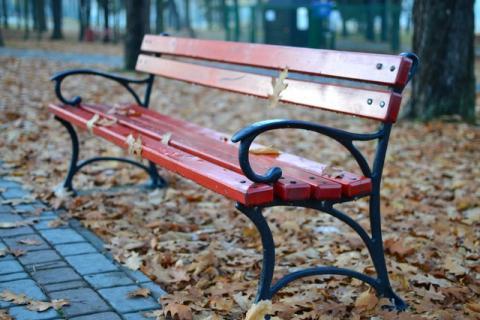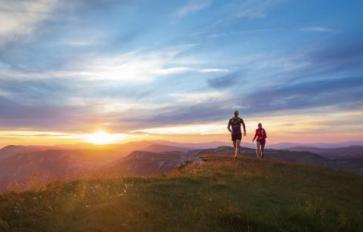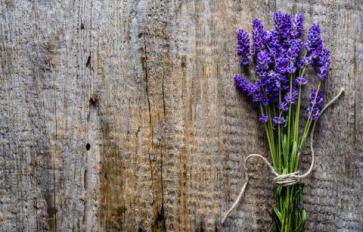
Down the stairs of my condominium and across Campus Drive, I walk along Leona Canyon Open Space Preserve. I encounter an expanse of wild radish and California golden poppies. Below, there’s a culvert and a pond lined in cattails, home to a family of mallards whose ducklings hide behind the rushes. I continue down a slope alongside a stream flowing out toward Mills College, and eventually, to the bay.
It’s a three-mile walk, first an easy flat jog, then up a fairly steep hill that leads to the buildings of Merritt College, a community college with spectacular views of the Bay. I hike along a stretch of California buckeye trees that erupt during the spring months into white candelabra; bay oak and laurel trees cascade along the hillside, trunks undulating like dancers who reach out to partners as robins and song sparrows flit from branch to branch, sunlight filtering through branches in a soft shimmer.
I mark my journey up the length of the canyon by three benches. The first bench overlooks a growth of purple periwinkles that weave themselves into groundcover. A large oak grows on the other side of the bank, spans the creek and provides a constant expanse of shade. After my husband died, I used to talk to this oak, which reached out its branches and enclosed me within its protective shade.
Walking steadily, I come to a second bench, navigating past brambles of California blackberry whose white flowers in the early summer turn into ripening fruit, stands of white poison hemlock marked by dots along their stem to distinguish them from umbrella-like flowers of cow parsnip. This part of the canyon is shaded by bay laurel and harbors large colonies of sword ferns and stinging nettles that remind me of “The Wild Swans,” a tale by Hans Christian Anderson about a young girl who gathered nettles from graveyards to help her brothers regain their human form. I sat here on many occasions holding hands with a lover until he left. Later, I nursed my heart, understanding the gift I’d received after a difficult marriage.
The third bench is not far from the top of the hill, memorialized to the Jalquin people, one of the Ohlone tribes that used to call this area home. I am surrounded by yellow monkey flowers, invasive French broom, and purple thistle. But the trail has become more congested, overrun by dog-walkers.
These days it seems like I might be the only one who walks Leona Canyon Preserve without a dog. When I first moved here about twelve years ago, the trail almost felt like my private secret, a stream running past groves of bay, buckeye, coast live oak, and madrone trees, an area abloom in the spring with wild radish and cow parsnip.
In my first years at the canyon, I’d get excited if a saw a young garter snake swish past, or a hare dive into the brush. Sometimes I’d even see a red fox. Once I thought I spotted a mountain lion on the crest of the hill. But the area has been discovered, one of the few places in Oakland of its kind where dog walkers are allowed to herd their charges off-leash in a three-mile walk from the bottom of Leona Canyon to Merritt College. Dogs joyously bound up the trail, glad to be free in a space where the air is freshly oxygenated by trees and running water. It is rare that I see a hare anymore. Even the snakes have disappeared. Of course, the trail is still beautiful, especially since the winter rain has filled the empty stream again after these last difficult drought years. Still, Leona Canyon Preserve has changed. And after making it past benches one and two, so have I.
I sit at the third bench and survey a growth of wild anise. At this stage of my life, it’s not possible to know exactly what lies ahead. But I look forward to all new discoveries, wherever the path will lead.








